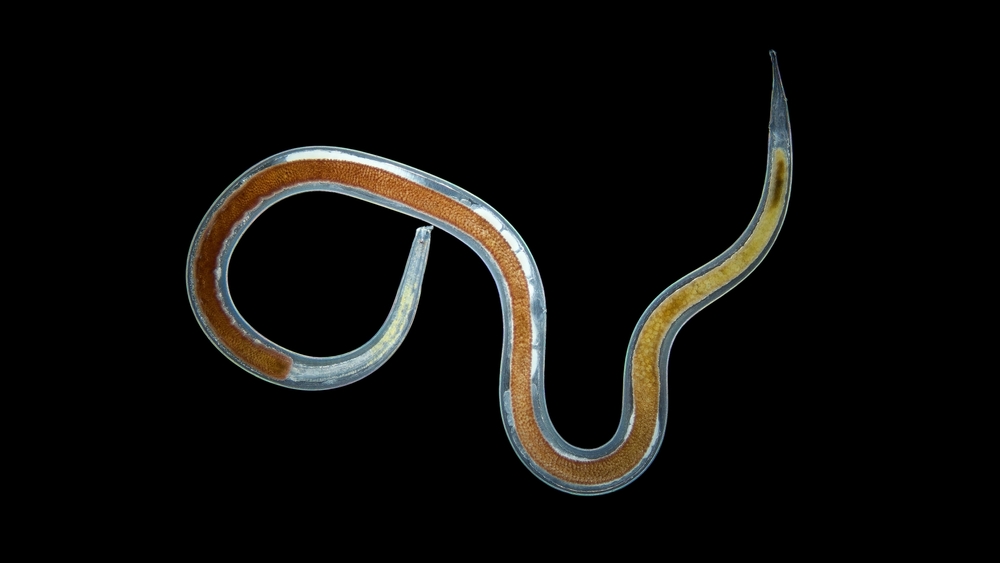
WWW.DISCOVERMAGAZINE.COM
Fossils Solve a Nervous System Mystery in Molting Animals
With so many elusive creatures occupying the forgotten corners of Earth, scientists are always knee-deep in mysteries that form the fabric of the animal kingdom. A big part of the puzzle is understanding how certain animals have developed distinct characteristics from ancestors that lived hundreds of millennia ago; for one group of animals, Ecdysozoa, the debate surrounding the ancient evolution of their nervous systems is now settled thanks to a new study published in Science Advances.What Are Ecdysozoans?Ecdysozoa is a group of animals that includes arthropods (insects, crustaceans), nematodes, and other worm-like organisms. One of the defining hallmarks of ecdysozoan animals is ecdysis, the process of molting, or shedding, their cuticle, an exoskeleton that covers their body like a protective set of armor.Lately, though, scientists have been more concerned with the internal structure of Ecdysozoa, particularly relating to the unclear origins of their nervous systems. The new study resolves pressing questions about this mystery.Previously, scientists were unsure exactly how the ventral nerve cord (a vital component of invertebrates central nervous system) developed in ecdysozoans. However, a close look at Cambrian-age (541 million years to 485 million years ago) fossils of Scalidophora, a subgroup of Ecdysozoa found in marine environments, has revealed the source of these animals nervous system structure.The Nervous System ConundrumThe central nervous systems of ecdysozoans, which includes the brain and ventral nerve cord, have perplexed scientists in the past. This is because some phyla within the group contain different arrangements of ventral nerve cords; this is evident in animals of Scalidophora, which includes priapulid worms, loriciferans, and kinorhynchs.Priapulids only have a single ventral nerve cord, while loriciferans and kinorhynchs have paired nerve cords. This begs the question: did the ancestor of all ecdysozoan animals have a single or paired ventral nerve cord? The researchers were also interested in knowing why loriciferans and kinorhynchs share a similar nervous system design with arthropods despite entering different lines of evolution at some point.Connections to a Common AncestorInvestigating fossils gave researchers the answers they were looking for. They studied fossils representing ancestral Scalidophorans from the early Cambrian-age Kuanchuanpu Biota and Chengjiang Biota, as well as Ottoia prolifica (an ancient priapulid-like worm); the researchers found structures running along the ventral side of these organisms, closely aligning with the single ventral nerve cords seen in modern priapulids.Based on this discovery, nematoids and panarthropods, which includes arthropods, tardigrades (water bears), and onychophorans (velvet worms), also evolved from a common ancestor that likely had a single nerve cord.This leads us to propose that the common ancestor of all ecdysozoans possessed a single ventral nerve cord, said Chema Martin-Durn, a biologist at Queen Mary University of London, in a press release. The paired nerve cords observed in arthropods, loriciferans, and kinorhynchs likely evolved independently, representing derived traits.The Advantages of a Segmented BodyAnother important trait shared by some ecdysozoans is a segmented body, found in loriciferans, kinorhynchs, and panarthropods. This body plan provides major advantages for these animals; one 2019 study about segmentation in arthropods described the trait as a Swiss-Army knife-like specialization of appendages that allows arthropods to perform a variety of functions that ultimately aid their survival in many environments. The researchers of the new study claim that this structural build may have co-evolved with nervous system modifications.The emergence of paired nerve cords likely facilitated greater coordination of movement, particularly in segmented animals, said Mara Herranz, a marine biologist at Rey Juan Carlos University in Madrid, Spain, in the release. During the Precambrian-Cambrian transition, changes in the nervous and muscular systems were likely tied to the development of appendages, enabling more complex locomotion.With this updated perspective on ecdysozoans, scientists now have a more clear understanding of these animals evolutionary history, especially regarding how their nervous systems first arose before the various lineages diverged.Article SourcesOur writers at Discovermagazine.com use peer-reviewed studies and high-quality sources for our articles, and our editors review for scientific accuracy and editorial standards. Review the sources used below for this article:Science Advances. Preservation and early evolution of scalidophoran ventral nerve cordNational Library of Medicine. Ancient origins of arthropod moulting pathway componentsiNaturalist. Priapulid WormsiNaturalist. LoriciferansiNaturalist. Mud DragonsNational Library of Medicine. Developing an integrated understanding of the evolution of arthropod segmentation using fossils and evo-devoJack Knudson is an assistant editor at Discover with a strong interest in environmental science and history. Before joining Discover in 2023, he studied journalism at the Scripps College of Communication at Ohio University and previously interned at Recycling Today magazine.
0 Commentaires
0 Parts
123 Vue


